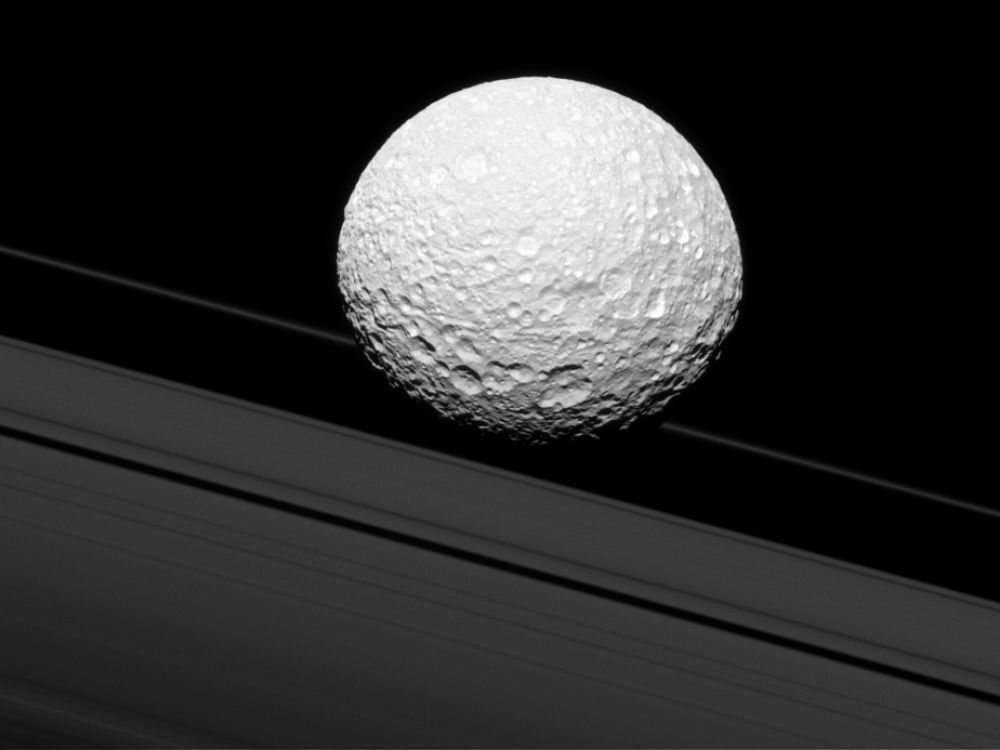
Ocean under the surface of Saturn’s moon Mimas?
A few days before ending its apotheosis mission by plunging into Saturn’s atmosphere, NASA’s Cassini probe measured a strange oscillation (a wobble, astronomers say) in the rotation of Mimas, the planet’s smallest inner satellite. It could indicate the existence of an ocean hidden beneath its surface whose existence has not been betrayed by superficial evidence, as in other frozen worlds.
Moon in the shape of a black star
Mimas is a body with a diameter of 398 km and of low density; One of the two hemispheres features a very large crater called Herschel (in honor of the astronomer who discovered it) giving it the false appearance of a black star, the famous combat station of the Star Wars saga. In the middle of this excavation, 130 kilometers wide and 10 kilometers deep, a mountain rises at least as high as Mount Everest! Because of its small size and surface studded with craters but without flaws or fractures, astronomers viewed Mimas as a frozen ball of ice with no geological activity, a dead star. That’s what Alyssa Rhoden, of the Southwest Research Institute (US), was trying to prove when she realized that the young moon was hiding a kept secret.
Mimas resemble a dark star. credit: NASA/JPL-Caltech/Space Science Institute.
Because the vibrations observed by Cassini indicate that geological processes are occurring below the surface of Mimas and could be caused by the presence of the ocean. To find out, frozen satellite specialist Alyssa Roden generated numerical models to understand whether Mimas could actually store enough heat to keep liquid water inside. This heat is caused by the tidal forces that bind the young moon and Saturn. As she reveals, in an article published in the magazine Icarus, consistent models adhere to the hypothesis of an inner ocean covered by a layer of ice between 20 and 30 km thick. However, Alyssa Roden remains cautious and specifies that additional research, and possibly a new expedition to the Saturn system, will be necessary to confirm this.
A new kind of world
However, if it turns out that Mimas does indeed harbor a subsurface ocean, that would make it a member of a new class of stars:Small hidden ocean worlds with surfaces that do not betray the existence of the ocean”, explains the scientist in a press release. This opens the possibility that there are more bodies in the solar system that can contain liquid water, and thus provide suitable conditions for the development of life.
About thirty years ago, exploration of the solar system showed that liquid water can be found somewhere other than the surface of a planet located in the habitable zone, which is what happens on Earth. Far from the Sun, many moons of giant planets such as Europa around Jupiter, Titan and Enceladus around Saturn, and even dwarf planets such as Pluto or Ceres can harbor this precious resource. With this discovery on Mimas, new targets for the search for liquid water will be identified, especially among the moons of Uranus. But the time for confirmations is still far away.

“Organizer. Social media geek. General communicator. Bacon scholar. Proud pop culture trailblazer.”

